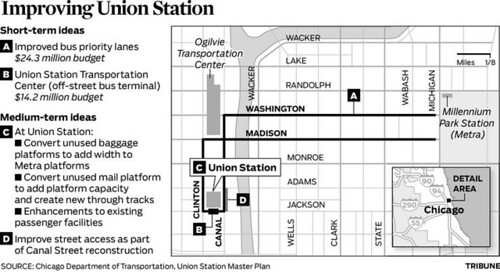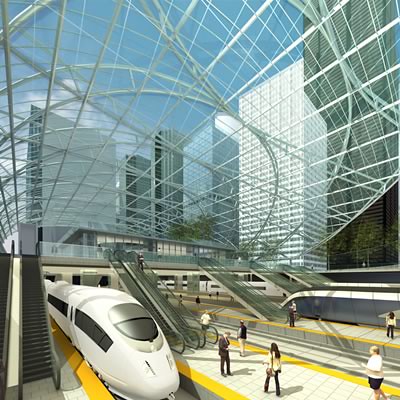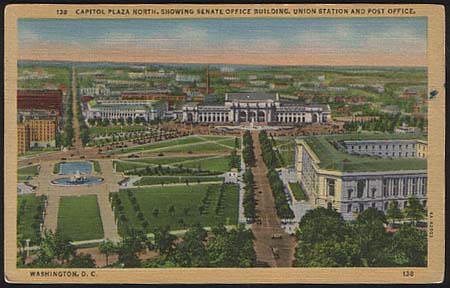Master planning and DC's Union Station intermodal transportation center
Last week the City Paper had its cover story on Union Station, "A More Perfect Union Station: D.C.'s Train station is a mess; again."
Basically, the problem is that Union Station is owned by the federal government and was handed off to a "public-private" partnership (3P in the trade), with minimal public oversight and limited local involvement.
The book I mentioned in a previous entry, A Negotiated Landscape by Jasper Rubin, about the San Francisco waterfront, makes a point that I found very relevant to thinking about DC.
In the 1800s development and management of the San Francisco Waterfront had a lot of corrupt elements to it. So the State of California took the waterfront over, creating a port authority that had limited involvement from the locals, thus separating management control of the waterfront from the people that had the most interest in it--not just capital and political interests that may have been willing to manipulate, lie, cheat and steal to serve their interest, but community and civic interests as well.
That's the fundamental problem with Union Station--its management is federal/disconnected, but for the most part the building's importance concerns its use as a key node in the local transportation system.
Yet Union Station is used by upwards of 65,000 daily commuters (there's double counting, because some railroad passengers use the subway), it's a shopping center for residents and nonresidents, it's the most used civic asset in the city, it's one of the key transportation nodes in the region, and it's a beautiful building that anchors the city.
First, if its oversight is federal, by definition it's disconnected from local concerns. Second, as in too many of these creations, the 3P was created but I don't think they were required to create a master plan through a public process. Third, they weren't required to update a master plan on a regular basis.
So there is no master plan for Union Station. And if there were there might not be all that much local input into it. Meaning, it might not be that good.

Last week, the City of Chicago released a master plan for its Union Station. See "New master plan emerges to transform Union Station" from the Chicago Tribune. From the article:
•Expanding capacity to handle more trains and relieve congestion to make today's crowded concourses and mezzanines more inviting. Union Station handles more than 300 trains each weekday carrying more than 120,000 arriving and departing passengers.
•Building an off-street CTA bus terminal on the existing surface parking lot south of Jackson Boulevard; and providing more convenient transfers to CTA trains as well as taxis and shuttles.
•Launching an east-west bus rapid transit service from Union Station to Michigan Avenue and eventually Navy Pier.
•Easing potentially dangerous conflicts with vehicles, pedestrians and bicyclists by reconfiguring how Canal Street is used.
The article discusses visions to build a new mixed use station and incorporating high speed train service.
-- Chicago Union Station Master Plan website
-- Union Station: Chicago's Downtown Airport, Midwest High Speed Rail Association

High speed rail vision for a downtown Chicago train station. Illustration provided by Solomon Cordwell Buenz.
Note that Denver has done similar kind of master planning, although more focused on having their Union Station as the downtown hub for their regional light rail system.
Master plan...
Union Station will be past capacity and we will need a second depot, possibly in Arlington. There will be multiple trains per day running several short-distance intercity rail trips to all other population centers in the mid-Atlantic region. Camden Station will become more important in Baltimore. Dulles and BWI airports will continue to expand. National Airport may be sold and the land redeveloped, or it may continue to operate, depending on how much intercity travel continues to be done by plane.
Labels: federal policies and the city, public-private partnerships, transportation planning, urban design/placemaking




2 Comments:
Good content Master
Planning
This is a great post.
This post shares some important things about Master planning and DC's Union Station transportation center.
Online Medical Store.
Post a Comment
<< Home